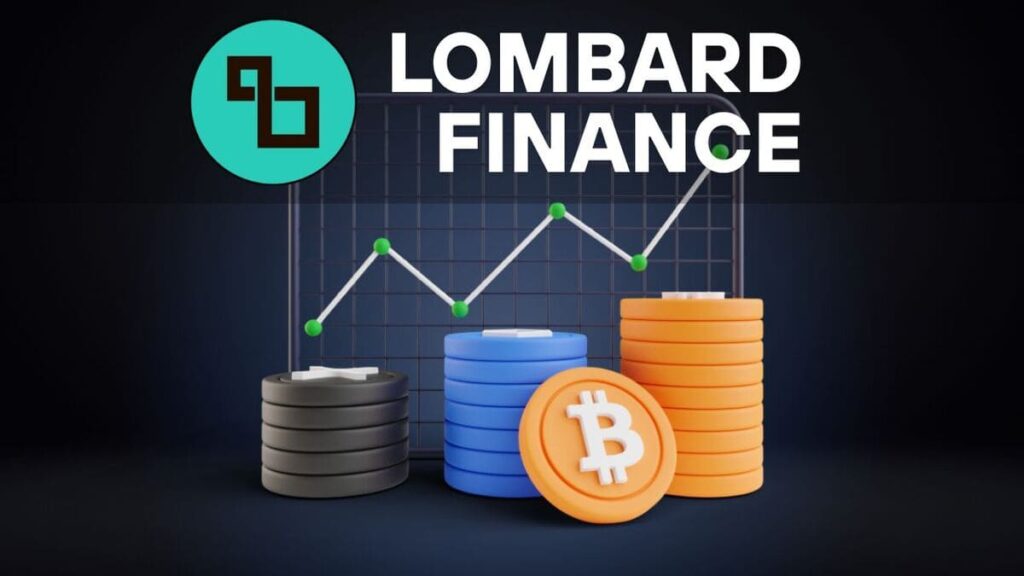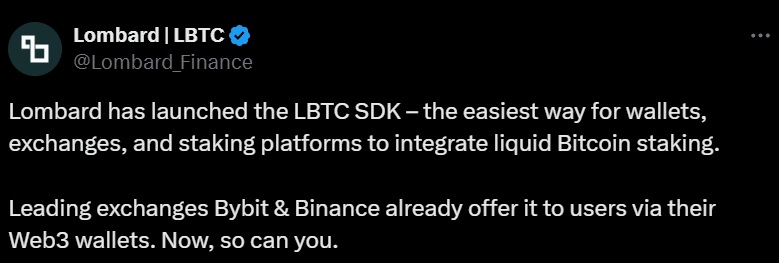TL;DR
- Lombard Finance launched an SDK that allows wallets and exchanges to offer BTC staking with a liquid token (LBTC) and a 3% annual yield.
- The tool aims to activate up to $154 billion in idle BTC held on centralized platforms, creating new revenue streams without altering custody.
- Binance, Bybit, Metamask, Trust Wallet, and other platforms are already moving forward with the system’s integration, which has surpassed $200 million in TVL and $4 billion in total volume.
Lombard Finance has launched a software development kit (SDK) that enables the integration of Bitcoin staking into platforms such as digital wallets and exchanges with minimal technical setup. This tool allows users to lock up their BTC in exchange for a liquid token called LBTC, which is automatically deposited into a DeFi system with a 3% annual yield.
Lombard’s goal is to activate a segment of the Bitcoin market that remains unused. Currently, it is estimated that around $154 billion in BTC is stored on centralized platforms without generating any income. With the new SDK, exchanges and wallets can offer an additional tool that produces returns while keeping users within their own ecosystem.
Lombard’s System Is a Resounding Success
Binance and Bybit have already integrated the system, showing their interest in adding functions aimed at enhancing decentralized finance. Other platforms such as xVerse, Metamask, and Trust Wallet are also progressing with the integration. Staking is executed through smart contracts developed by the firm Veda and operates within Lombard’s DeFi Vault, which now holds over $200 million in total value locked.
Since its launch seven months ago, Lombard’s staking system has grown to reach $4 billion in volume. The company has also extended the use of its LBTC token to the Sui blockchain, expanding its reach beyond Bitcoin’s main network.
New Capabilities for Bitcoin
Jacob Phillips, co-founder of Lombard Finance, explained that the initiative aims to shift BTC’s traditional role as a simple store of value. By enabling the asset’s use within DeFi applications, new opportunities arise for holders who leave it idle in wallets or exchanges.
The integration of BTC staking as a native feature in popular platforms provides a profitable alternative for users who previously had no access to yield-generating bitcoin products. At the same time, it opens a new source of revenue for companies that adopt the SDK













